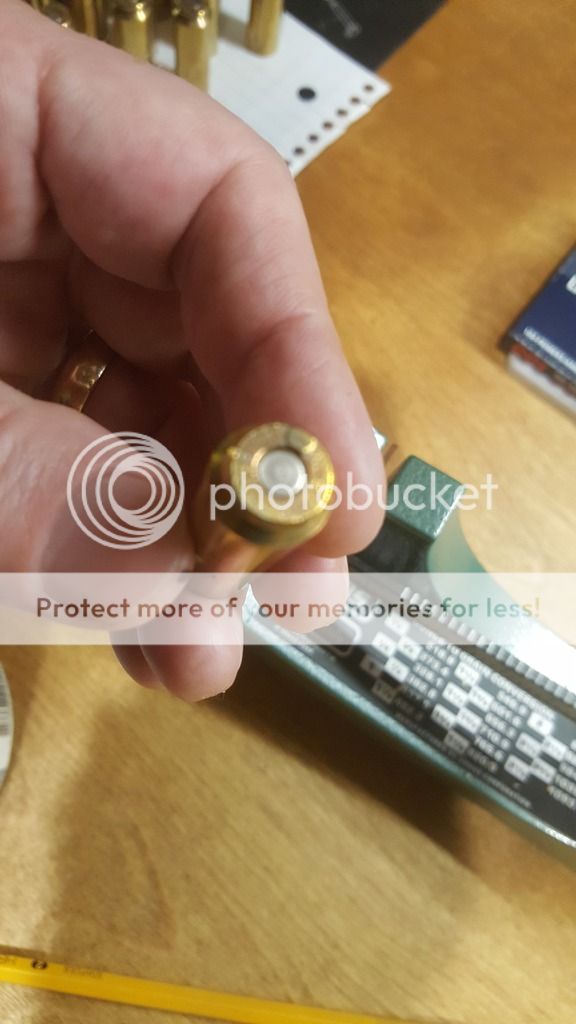scatter
NES Member
I am reloading 50 Beowulf for my BIL. Already made a few test rounds, ran them through his gun and everything seemed fine.
My recipe doesn't really pertain to my question, but for the record, I'm loading 40.9g IMR 4227, CCI 350, Speer 325g JHP.
After the test rounds fired fine, he gave me the rest of his factory Anderson brass, about 60 rounds, to finish loading. I am trying to be very careful with the loads, so I weigh each round by hand. Started noticing that some of the cases wobbled on the scale. Turns out there is some extrusion on maybe 20% of the factory cases. Here is a picture of one of the worst ones, which I had already primed because I wasn't looking for over-pressure signs on factory rounds:

They range from something similar to this, down to the point where you have to drag a fingernail across to even know it's there. The other 80% are completely flat.
I took EC's courses, so I know that some soft factory ammo tends to extrude even if it's not over-pressured.
So finally I get to my questions: Anybody familiar with Anderson 50 Beowulf ammo at factory pressures, and is this normal? Should I toss the ones that are extruded or just keep reloading them at my current minimum pressures?
My recipe doesn't really pertain to my question, but for the record, I'm loading 40.9g IMR 4227, CCI 350, Speer 325g JHP.
After the test rounds fired fine, he gave me the rest of his factory Anderson brass, about 60 rounds, to finish loading. I am trying to be very careful with the loads, so I weigh each round by hand. Started noticing that some of the cases wobbled on the scale. Turns out there is some extrusion on maybe 20% of the factory cases. Here is a picture of one of the worst ones, which I had already primed because I wasn't looking for over-pressure signs on factory rounds:

They range from something similar to this, down to the point where you have to drag a fingernail across to even know it's there. The other 80% are completely flat.
I took EC's courses, so I know that some soft factory ammo tends to extrude even if it's not over-pressured.
So finally I get to my questions: Anybody familiar with Anderson 50 Beowulf ammo at factory pressures, and is this normal? Should I toss the ones that are extruded or just keep reloading them at my current minimum pressures?
